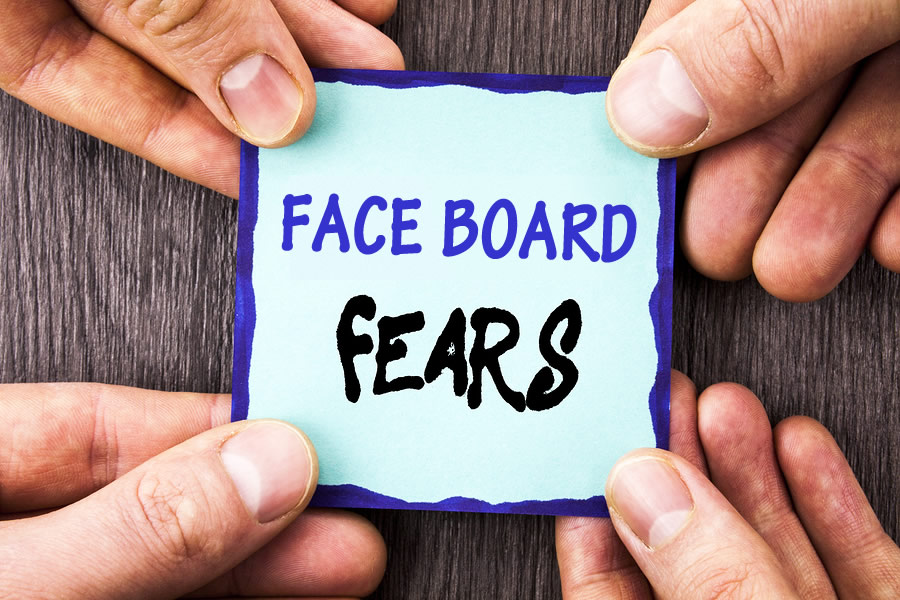
I’m on the road this month, speaking at conference after conference. And I find that I’m being asked, more and more, to speak about boards and fundraising.
The absolute first step to get board members to help with fundraising is to alleviate fear.
Alleviate Your Board’s Fear of Fundraising
Fundraising can seem scary. It’s not something most board members have experience with.
Not only that, we live in a culture (in the US, anyway) where it’s impolite to talk about money. We don’t talk about out finances, how much we earn, or what we spend on vacations. So, the idea of asking people to give their money can be frightening.
The most important step in alleviating fear is providing education.
Your board’s mantra? Mission over money.
It’s important to remind board members that fundraising isn’t about money. Yes, you read that correctly. At its core, fundraising isn’t about money — it’s about changing the world.
So instead of talking about money, encourage your board members to talk about your mission. They should be talking about finding a cure, providing education, creating art, cleaning the environment, and educating children. Then, they can talk about how much those things cost.
Fundraising is so Much More Than the Ask
Fundraising is so much more than asking people for money. In fact, when I facilitate board retreats, I explain that asking is only about 5% of the fundraising process.
For example, let’s say you want to raise major gifts. What follows is a 4-step breakdown of the process and how your board can get involved in key steps.
Step 1: Identification
An important first step is identifying people who might make those gifts. This could take place over a series of meetings, including time for research and networking, over a few of months.
Board members can help here by introducing their friends, family members, colleagues, and networks to the organization.
Step 2: Cultivation
The next step in the fundraising process is cultivation, in other words, building relationships. This involves educating your prospective donors about your organization, and getting to know them as donors and philanthropists.
This is a great place for your board members to help with fundraising, by leading tours, arranging meetings, and providing information. Cultivation also takes place over several months.
Step 3: Solicitation
The primary reason people give to charity is because they are asked, so you can’t skip this critical step. However, it’s only one moment in time (usually a short, 30 minute meeting) in comparison to the longer effort put in for the other three steps. Asking is only 5% of 95% (in terms of time spent) of the fundraising process, but it’s what board members fear most.
Although we would love our board members to help with asking, it’s more important that they help where they are most comfortable and therefore likely to be most effective.
Step 4: Stewardship
This is the important follow-up that needs to be done after a gift is made. Stewardship is about saying “thank you” in ways so that the donors really feels thanked. It’s not enough to simply say “thank you” or send a note. It’s important to make an effort so that the donor understands how important their gift was, and knows that they made a difference.
This is a great place to get board members started with fundraising. They can make thank you calls, write thank you notes, and thank people in person.
Beyond Asking for Money
Once you break fundraising down into these four distinct steps, it becomes a lot less scary.
Ask board members to help where they feel most comfortable, and it will become easier and more enjoyable for them to get involved. As you can see, there is much more your board can do to help beyond simply asking for money.
What have you done to help reduce your board members’ fear of fundraising? Have you tried something different? Please share your experiences in the comments.
Check out the other posts in this series…

Love this! Thinking about emailing directly to my Board as we are in process of getting them to start recruiting members to our giving society. Thanks Amy! You make the steps easy to understand and they will see just how little time the actual ask is.
I’m a board member and chair the Resource Development Committee. Recently, board members were asked to seek sponsorships and auction donations for a fundraiser. I saw my role as cheerleader. I sent e-mails to board members everyday or two with an update on who had secured contributions from what community members. I think it built excitement in getting the job done and was a constant reminder to make a contact.
Good for you, Marjorie! Glad to hear how you were successful.
Thanks Amy for your piece on boards and getting down to specifics on how they can be engaged to support the mission of their organizations. Money is the fuel that helps to catalyze the mission and have a greater impact in changing the world.
Yes!
Hello Amy,
As always your approaches to fundraising are very helpful and easy to implement. I have recently joined a new organization and have a meeting scheduled with the chair of the Board’s Fundraising and Development Committee. I will definitely utilize the process you have outlined here and look forward to parts 2 and 3. Thank you!
Hooray! Thanks!